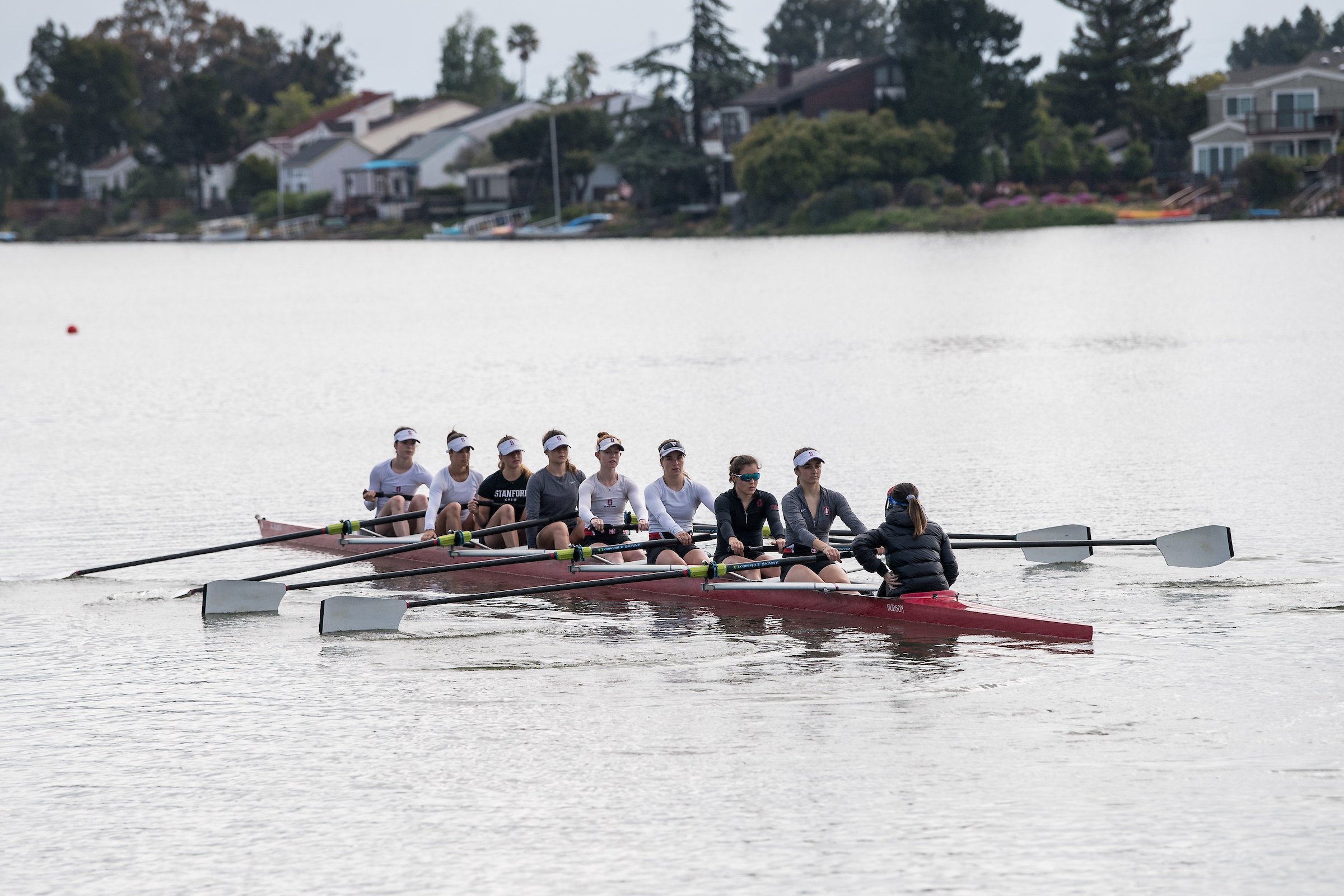Season openers are almost never senior days, but that’s what senior Claire Smythe and the four other seniors on Stanford lightweight rowing will be facing as they take to the water on Saturday at Redwood Shores.
It’s part of the Cardinal’s shortened season — just three competitions, including Saturday’s races against St. Mary’s and the University of San Diego (USD) — on its quest for a 10th trophy in the varsity eights event in its final season at the varsity level. The program’s previous nine championships — the most in the nation — have all come after 2009. When taking into the other events, varsity fours and double sculls, Stanford still reigns supreme.
Smythe helped earn two of those national championships in her freshman and sophomore years, and she’s grateful to have the chance to race for a third, even in the season’s condensed format. According to Smythe, competitions normally include over a dozen teams, with multiple heats to qualify the final races.
“It’s just like a big rowing festival,” she said. “So it’s definitely a lot quieter this year.”
Rather than compete in those normal regattas, the team will instead travel down the West Coast for a head-to-head against San Diego State on May 7. Three weeks later, the team will head to West Windsor, New Jersey for the Intercollegiate Rowing Association (IRA) National Championship Regatta, which will definitely be quieter.
In 2019, the Cardinal beat out six other teams in varsity eights and varsity fours. This year, only Stanford, Wisconsin and Boston University will be fielding teams, with Georgetown as a potential fourth competitor. Saturday’s opponents of USD and St. Mary’s won’t be present. They’re openweight teams and will therefore be vying for the NCAA National Championship in Sarasota, Florida, the same weekend as the IRA regatta.
Smythe says racing teams that are bigger and stronger is good practice and has helped the team develop a good mentality. She believes a big aspect of the team’s competitive spirit “is just having that underdog mindset and just being prepared and aware that there’s always going to be factors working against you.”
One of those factors working against the team is the July decision by the University to discontinue support for the lightweight team along with 10 others at the varsity level, a decision that disappointed Smythe.
“I think that they were given certain requirements and they chose teams that didn’t fit their mold of what they thought athletics should be,” she said.
The way the lightweight rowing team breaks the mold is with its high concentration of walk-ons. According to Smythe, 13 of last year’s 30 rowers were walk-ons. Even though this year’s roster shrank down to 14, and the number of walk-ons to four, she contends that the team is still very welcoming to newcomers, as long as they’re under the height requirement.
“We’ll take them, and we’ll coach them, and we’ll give them training and we’ll support them as much as we can,” she said. “At the end of the day, rowing is a team sport, and a team culture.”
While alumni and parents have organized to “Save Stanford Rowing,” Smythe acknowledged the difficulty of the job, and the sensitivity of the issue.
“We understand that it’s a very delicate matter and this is a sport that’s very precious to all of us,” she said. “There are a lot of different important causes to fight for, so we’re trying to approach this issue with as much like sensibility and respect as we can.”
